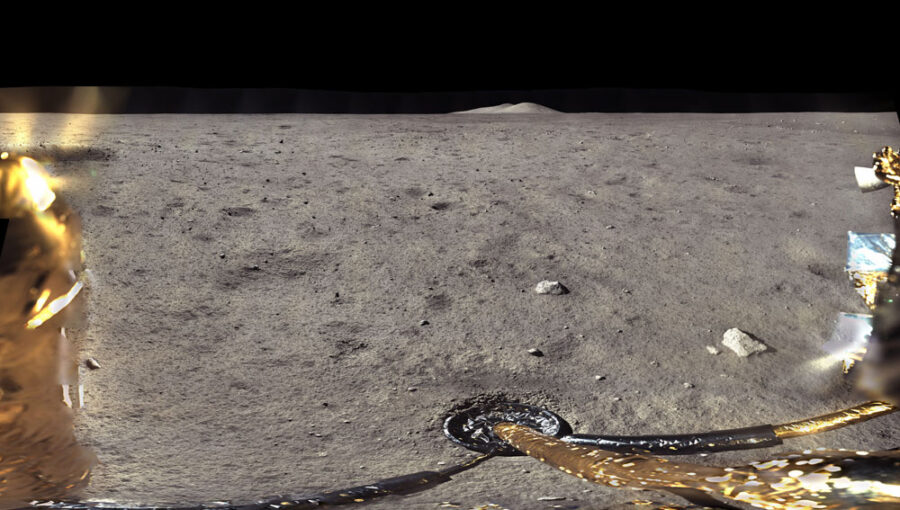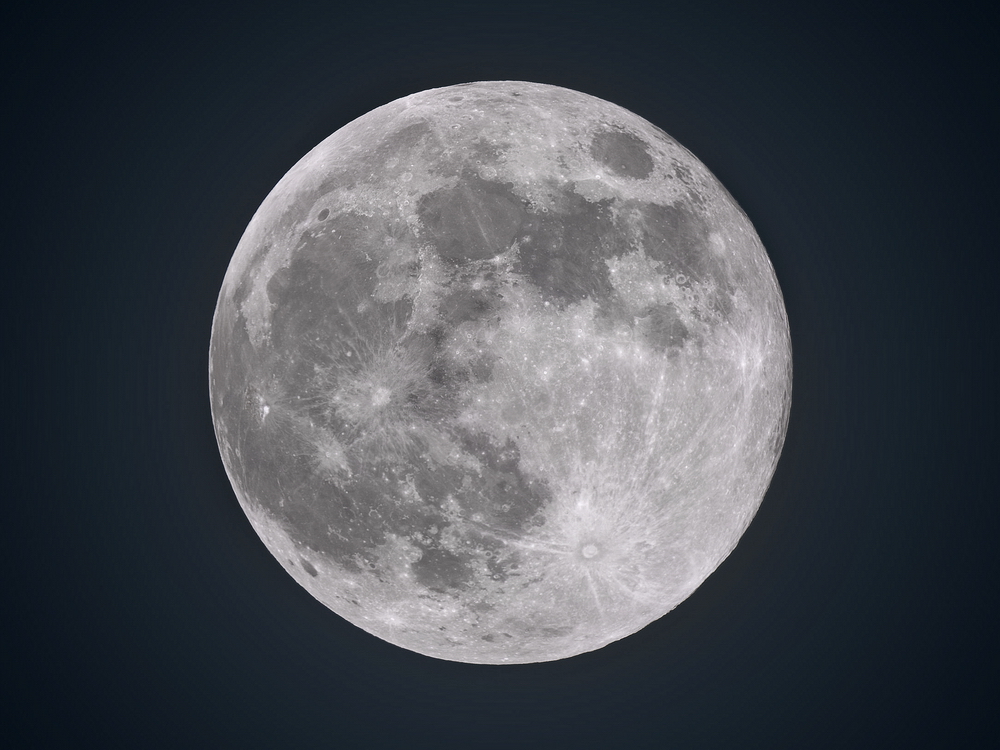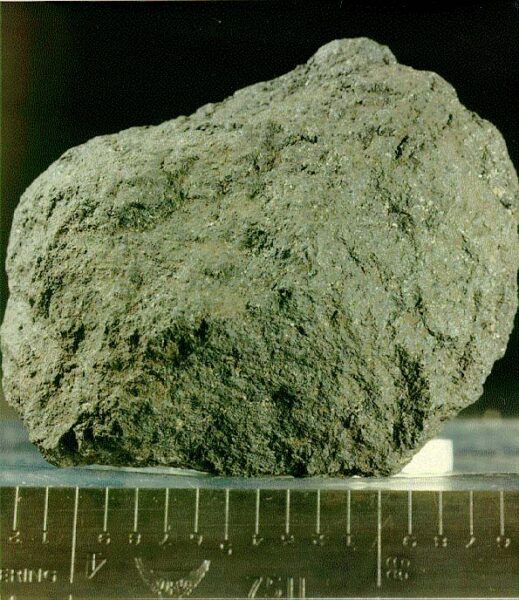China’s Chang’e 5 mission returned pieces of the Moon in a technological feat last year. Now, scientists are publishing the first analyses of those samples.

CNSA / CLEP / Don Davis
Analysis of lunar material delivered to Earth by China’s Chang’e 5 mission confirms that the samples are the youngest collected to date. But their composition surprised scientists.
A team of lunar scientists led by Xiaochao Che (Chinese Academy of Geological Sciences) analyzed the lead content in two basalt fragments of around 3 to 4 millimeters in size, publishing the results in the October 8th Science. They determined the fragments’ to be around 1.96 billion years old, making them almost a billion years younger than material returned by the Apollo and Soviet-era Luna missions as well as what’s found in lunar meteorites.
Collecting young lunar rocks was one of the main objectives for the Chang’e-5 mission, which sent a lander to the Moon in December 2020. The craft grabbed 1.7 kilogram (3.7 pounds) of lunar regolith from the vast volcanic plain of Oceanus Procellarum and flew back to Earth within the month. Observations from lunar orbit had identified this mare to be younger than other areas by its paucity of craters, which suggested that the lava there had flowed more recently. By dating the samples returned to Earth, the scientists confirm that volcanism occurred later in Oceanus Procellarum than other areas of the Moon.

Gary Seronik / S&T
The composition of the samples poses new questions, however.
A relatively high abundance of heat-producing elements in the lunar mantle, deep below the mare, might have kept the magma flowing. Some of these elements would have been radioactive (namely uranium, thorium, and potassium). Yet Che’s team finds no unusual amounts of these radioactive elements; the concentrations are similar to those the basalts returned by Apollo and Luna missions.
Scientists also expected the rocks from this site to contain other heat-producing materials known as KREEP, short for potassium (labelled “K” in the periodic table), rare Earth elements, and phosphorus. Instead, only relatively small amounts were found.
“The unexpected composition challenges our traditional thinking,” says Long Xiao (China University of Geosciences), a planetary geoscientist not involved in the study. If not heat-producing elements, what would have kept Oceanus Procellarum hot? Did the tidal pull from Earth’s gravity heat the Moon’s interior? Or is the mantle made up of different minerals than we thought?
Besides raising new questions, the results also provide clarity in chronology. The age of Oceanus Procellarum gives a “ground truth” that scientists can compare to the number of craters there. They can then infer the ages of other surfaces across the solar system by measuring the crater density.

NASA / Johnson Space Center photograph S70-44091
Scientists had radiometrically dated Apollo samples and confirmed various lunar areas as being between 3 billlion to 4.5 billion years old. The Chang’e 5 samples fill a hole in lunar history that will provide insights into the evolution of far-flung planetary bodies.
The team obtained the fragments for this analysis via one of 31 approved applications from 13 institutions that applied for pieces from the first batch of Chang’e 5’s sample return. The first batch consisted of 17.4764 grams, or 1% of the total amount returned. The published results confirm the sample’s scientific value as well as the mission’s impressive technological feat.
 0
0









Comments
You must be logged in to post a comment.